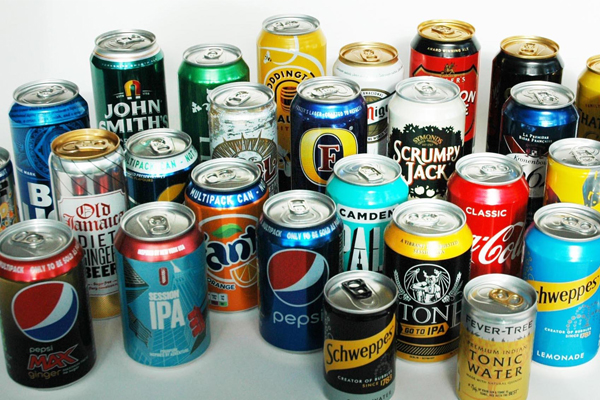Industrial Buildings: Complete Guide to Types, Features and Applications
What’s an industrial building?
An industrial building is a structure specifically design and construct to house industrial activities such as manufacturing, production, assembly, storage, distribution, or research and development. These specialized facilities prioritize functionality, durability, and efficiency over aesthetic appeal, though modern industrial architecture oftentimes incorporate innovative design elements.
Industrial buildings form the backbone of manufacturing and logistics sectors, provide the physical infrastructure necessary for economic production and distribution networks to function efficaciously.

Source: solutionsgc.com
Key characteristics of industrial buildings
Structural features
Industrial buildings typically feature open floor plans with minimal interior walls to maximize usable space and flexibility. The structures usually employ steel frames, reinforce concrete, or a combination of both to support heavy equipment and accommodate large spans without excessive columns.
Ceiling heights in industrial buildings range from 14 feet in older facilities to over 40 feet in modern warehouses and distribution centers. These high clearances allow for vertical storage systems, overhead cranes, and specialized production equipment.
Most industrial buildings incorporate concrete slab floors design to bear substantial weight loads from machinery, inventory, and vehicles. These floors oftentimes include specialized coatings or treatments to resist chemicals, impacts, and wear.
Functional design elements
Loading docks and oversized doors are standard features that facilitate the efficient movement of goods and materials. These access points accommodate trucks and heavy equipment, with hydraulic levelers to bridge the gap between vehicles and the building floor.
Industrial buildings require robust utility systems, include enhance electrical capacity for machinery, specialized ventilation for production processes, and oftentimes compress air, gas, or water systems distribute throughout the facility.

Source: iskalo.com
Fire suppression systems in industrial buildings typically exceed standard commercial requirements, with specialized sprinkler systems, fire walls, and emergency systems design for the specific hazards present in industrial operations.
Types of industrial buildings
Manufacturing facilities
Manufacture buildings house the equipment and processes need to transform raw materials into finished products. These facilities require specialized layouts base on production workflows, with areas designate for receive materials, production lines, quality control, and shipping.
Light manufacture buildings support assembly operations, electronics production, and other less intensive industrial processes. These facilities typically feature enhance lighting, climate control, and cleaner environments than heavy manufacturing spaces.
Heavy manufacturing facilities accommodate operations involve large equipment, high heat processes, or significant power requirements. These buildings oftentimes include reinforce foundations, crane systems, and specialize ventilation to handle industrial byproducts.
Warehouses and distribution centers
Warehouses principally function as storage facilities for raw materials, components, or finished goods. Modern warehouses feature clear span designs with high ceilings to maximize cubic storage capacity and accommodate racking systems.
Distribution centers focus on the efficient movement of goods kinda than long term storage. These facilities incorporate advanced logistics systems, with areas designate for receive, sorting, packaging, and shipping operations.
Fulfillment centers represent a specialized type of distribution facility design to process individual customer orders, oft for e-commerce operations. These buildings typically include sophisticated automation systems, conveyor networks, and pick stations.
Specialized industrial buildings
Cold storage facilities maintain control temperature environments for perishable goods. These buildings feature enhance insulation, specialized door systems to maintain temperature zones, and robust refrigeration equipment.
Data centers house computing and network equipment in control environments. While technically industrial in nature, these facilities require exceptional electrical capacity, backup power systems, cool infrastructure, and security features.
Research and development facilities blend industrial and office spaces, with laboratories, testing areas, and prototype production capabilities alongside administrative functions. These buildings oftentimes feature higher grade finishes and enhance environmental controls.
Industrial building construction
Common construction methods
Pre-engineered metal buildings represent one of the near cocost-effectivepproaches to industrial construction. These systems use standardized steel components manufacture off site and assemble rapidly on prepared foundations.
Tilt up concrete construction involve cast concrete wall panels horizontally on site, so lift them into position with cranes. This method offer durability, fire resistance, and comparatively quick construction timelines for industrial applications.
Conventional steel frame construction use structural steel columns and beams to create the building’s skeleton, with various cladding systems for walls and roofing. This approach offer flexibility for customization and future modifications.
Design considerations
The layout of industrial buildings must prioritize operational efficiency, with careful planning of workflow patterns, material handling systems, and equipment placement. Effective designs minimize unnecessary movement and optimize productivity.
Column space importantly impacts the usability of industrial spaces. Modern designs aim to maximize clear spans, with column grids of 40 feet or more to accommodate flexible rack layouts and equipment configurations.
Floor load capacity represent a critical specification for industrial buildings. Designs must account for both static loads (permanent equipment and storage )and dynamic loads ( (hicles, movement of materials ) )propriate to the intended use.
Zoning and regulatory considerations
Land use restrictions
Industrial buildings must comply with local zone ordinances that designate specific areas for industrial activities. These zones typically separate industrial operations from residential and commercial areas to minimize conflicts relate to noise, traffic, and environmental impacts.
Many jurisdictions classify industrial uses into categories base on potential impacts, such as light industrial, medium industrial, and heavy industrial. Each classification carry different requirements and restrictions regard build design, operations, and location.
Building code requirements
Industrial buildings must meet specialized code requirements relate to structural integrity, fire protection, and life safety. These codes oftentimes exceed standard commercial building requirements due to the increase hazards associate with industrial operations.
Environmental regulations importantly impact industrial building design and operation, with requirements for manage stormwater runoff, contain potential contaminants, and control emissions from production processes.
Accessibility requirements under the Americans with disabilities act (aAda)apply otherwise to industrial buildings than to commercial or residential structures, with exemptions for certain production areas but compliance requirements for offices, restrooms, and common areas.
Modern trends in industrial building design
Sustainability features
Energy efficiency has become a priority in industrial building design, with improved insulation, high efficiency HVAC systems, and lead lighting reduce operational costs. Many new facilities incorporate energy management systems to optimize consumption patterns.
Renewable energy integration, peculiarly roof mount solar panels, has become progressively common in industrial buildings. The large, unobstructed roof areas typical of warehouses and manufacturing facilities provide ideal surfaces for solar installations.
Water conservation measures in industrial buildings include rainwater harvesting systems, water efficient fixtures, and process water recycling capabilities that reduce both consumption and wastewater generation.
Technology integration
Smart building systems monitor and control various building functions, from lighting and HVAC to security and maintenance needs. These systems improve operational efficiency while reduce energy consumption and maintenance costs.
Modern industrial buildings progressively incorporate automation infrastructure, with designs that accommodate robotic systems, automated storage and retrieval systems (aasks) and conveyor networks that reduce labor requirements.
Enhanced connectivity features support the industrial internet of things (iriot) with robust data networks, sensor systems, and control capabilities that enable real time monitoring and optimization of industrial processes.
Economic considerations for industrial buildings
Location factors
Transportation access remain a primary consideration for industrial building location. Proximity to highways, railways, ports, or airports importantly impact operational efficiency and logistics costs, especially for distribution focus operations.
Labor market availability influence industrial location decisions, with businesses balance wage costs against workforce skills and availability. This factor has drive both the concentration of specialized manufacturing in certain regions and the dispersal of distribution facilities to serve population centers.
Utility costs and availability can importantly impact industrial operations, especially for energy intensive manufacturing. Access to reliable, affordable electricity, natural gas, water, and telecommunications services influence both location selection and building design.
Investment considerations
Industrial buildings typically offer lower construction costs per square foot than office or retail properties, though specialized manufacturing facilities with complex mechanical systems can exceed these averages.
Flexibility for future adaptation represent an important consideration in industrial building design and investment. Structures that can accommodate change production methods, storage systems, or level different industrial uses maintain long term value advantageously than extremely specialized facilities.
Industrial buildings oftentimes provide attractive investment returns due to comparatively low maintenance requirements, steady tenant demand, and retentive average lease terms compare to other commercial property types.
The future of industrial buildings
Emerge trends
Multi story industrial buildings have emerged in dense urban markets where land costs prohibit traditional single level development. These vertical facilities incorporate reinforce floors, freight elevators, and specialized loading systems to move goods between levels.
Mixed use industrial developments blend traditional industrial spaces with office, retail, or regular residential components. These hybrid projects respond to change work patterns and urban land use priorities, specially in redevelop industrial districts.
Last mile distribution facilities represent a growth category of smaller industrial buildings locate within urban areas to facilitate rapid delivery services. These facilities oftentimes repurpose exist buildings with adaptations for modern logistics operations.
Adaptation of exist stock
Brownfield redevelopment involve the remediation and repurposing of contaminate industrial sites. These projects transform obsolete or environmentally compromise properties into modern industrial facilities or mixed use developments.
Adaptive reuse of older industrial buildings has become progressively common, peculiarly for historic structures with architectural significance. Former factories and warehouses nowadays house everything from modern manufacturing to creative offices, retail, and residential uses.
Building retrofit improve the performance and functionality of exist industrial structures through upgrades to building envelopes, mechanical systems, and technological infrastructure. These investments extend building lifespans while reduce operational costs.
Conclusion
Industrial buildings represent specialized structures design to support production, storage, and distribution activities that form the foundation of economic systems. While prioritize functionality and efficiency, these buildings continue to evolve with technological advances, sustainability imperatives, and change economic patterns.
The diversity of industrial building types reflect the wide range of activities they support, from heavy manufacturing to precision electronics assembly, bulk storage to automate order fulfillment. Each type incorporate specific features and systems tailor to its intended purpose.
As manufacturing and distribution methods continue to evolve, industrial buildings adapt through both new construction and the transformation of exist structures. This ongoing evolution ensure that the build environment continue to support efficient production and distribution systems that meet change market demands.



